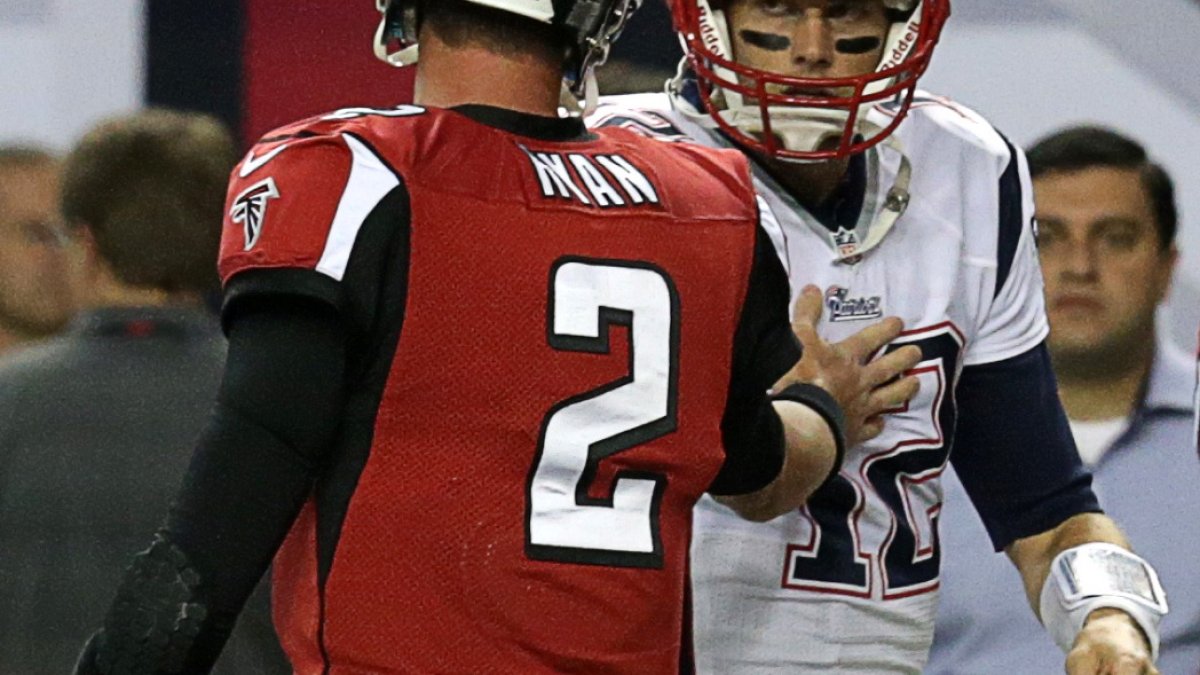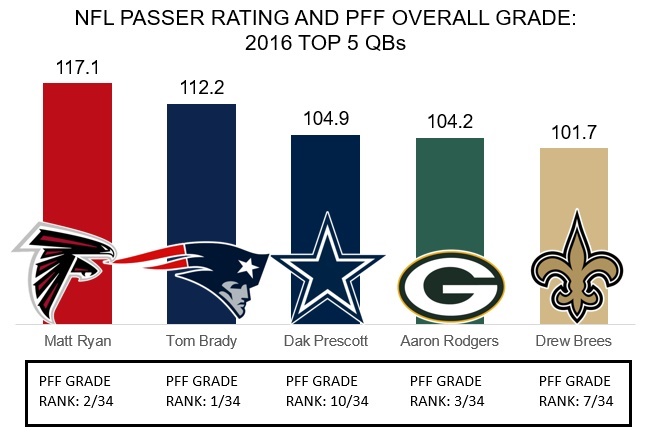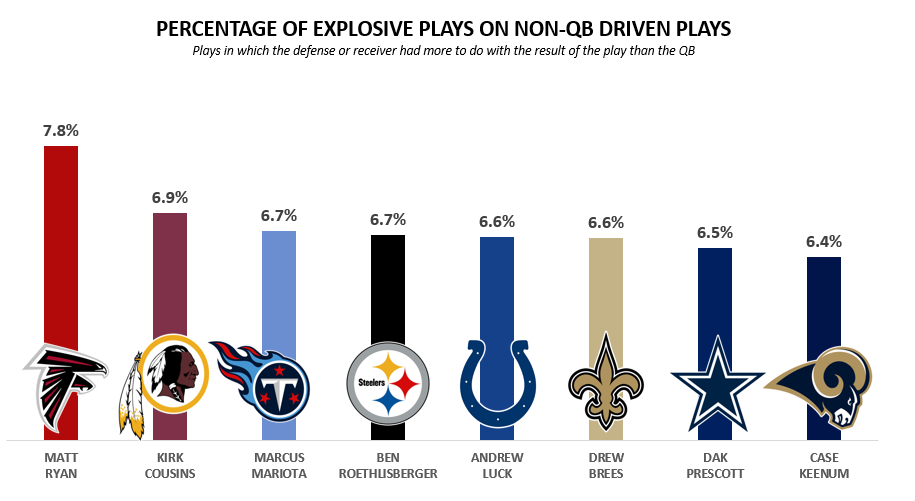Our goal at PFF is to always provide context to traditional stats, giving proper credit and attribution to the collection of those stats. As fantasy football continues to rise in prominence, stat lines are of utmost importance to many fans, and while they may win and lose leagues and daily games, they are not always the best indicator of actual on-field performance.
Join PFF Elite for access to PFF Signature Stats across all positions.
The first issue to recognize is the power of the stat line. Nothing paints a picture quite like the five numbers most commonly associated with a quarterback’s performances — completions/attempts/yards/touchdowns/interceptions — and the corresponding passer rating that is formed by using those numbers. A line of 24-35-350-3-0 implies an outstanding effort by the quarterback and spits out a “perfect” passer rating of 158.3, while a 15-30-148-0-2 line implies a difficult game and a passer rating of only 68.2. However, the stat line is missing the nuance of each play with regard to the quarterback’s supporting cast and the quality of his opposition.
At PFF, we look beyond the stats on a play-by-play basis, often giving out the same grade on plays with drastically different results. That’s the important part to grasp when using the PFF system, it’s an isolation of the quarterback’s role on a given play, providing context to where the stats are achieved. Because passer rating is so dependent on receivers, offensive linemen and even the quality of the defense, it’s a better stat to define the passing game as a whole rather than isolating it as an indicator of quarterback play.
Here’s a deeper look:
Last year’s top quarterbacks as sorted by passer rating rank similarly to the top quarterbacks by PFF grade, but it’s certainly not a linear list. While Atlanta Falcons QB Matt Ryan had a historic season statistically, he still ranked second to New England Patriots QB Tom Brady who had a historic season on a throw-for-throw basis in the PFF system. Among the reasons for Ryan’s better numbers were his six touchdowns on screen passes (double the next-closest quarterback), as well as excellent support from his playmakers as they accounted for a league-high 42 explosive (20-plus-yard) plays on what we’d call “simple” or “easier” throws in our play-by-play grading. On top of that, throw in some interception luck (Ryan finished with seven regular-season interceptions despite 13 “turnover-worthy plays,” a ratio that was luckier than all but eight quarterbacks last season), as in the play below:
Similarly, Dallas Cowboys QB Dak Prescott had slightly inflated numbers last season as well, though that certainly shouldn’t take away from what was an outstanding rookie campaign. He had the second-best interception luck in the NFL with only four picks despite 10 turnover-worthy throws, and that doesn’t include three bad fumbles that got harsh downgrades in the PFF grading system yet are nowhere to be found in the NFL’s passer rating formula.
On the other side of the coin, Brady’s two interceptions were very much indicative of his play, as he had only three turnover-worthy plays on the season, setting the record for the lowest percentage of turnover-worthy plays during the PFF era. His passer rating of 112.2 was actually lower than it could have been as he had few plays in which his receivers went above and beyond to inflate his stats and he ranked only 37th out of 38 in percentage of his passing yards that came on easy or “expected” throws. In other words, once the ball leaves the quarterback’s hands, his stats are largely in the hands of his teammates and the opposing defense, and the PFF system can sort through those quarterbacks who received the most help compared to those who received little inflation from their supporting cast or opponents.
Perhaps the best example of quarterback receiving more credit than he deserved was Philadelphia Eagles QB Nick Foles who led the league with a passer rating of 119.2 in 2013, yet his PFF passing grade of 82.3 ranked only 15th among NFL quarterbacks. Why the discrepancy? Foles received quite a bit of interception luck, as only Josh McCown had a lower percentage of turnover-worthy plays that resulted in interceptions (only two out of seven turnover-worthy throws became official interceptions, and one INT was negated by a penalty that had no bearing on the play). Foles was the league-leader in explosive plays that came on “easier” throws as an amazing 10.3 percent of his dropbacks resulted in a 20-plus yard plays on an easier or “expected” throw, dwarfing Matt Ryan's league-leading 7.8 percent that led the NFL last season. Foles also led the league with 16.4 percent of his yards coming on screen passes, another example of his stats being inflated by the work his receivers did after the catch.
Final word
While passer rating often gets you in the ballpark of the better quarterbacks, PFF grade is necessary to add the proper context as to the construction of that number. Passer rating does a fine job of describing the passing game as a whole, but there are better tools needed in order to properly evaluate quarterback play, especially on smaller sample sizes and over the course of an individual game. Those five basic numbers (completions/attempts/yards/touchdowns/interceptions) will paint one picture in your head, but it’s the PFF passing grade that better defines just how well the quarterback played and how much of those numbers should be attributed to those around him or just general good and back luck.






 © 2025 PFF - all rights reserved.
© 2025 PFF - all rights reserved.